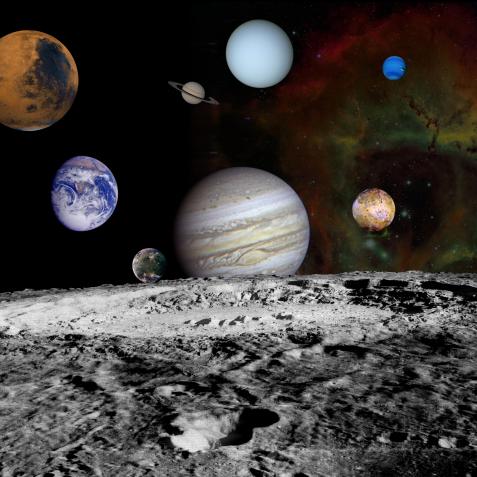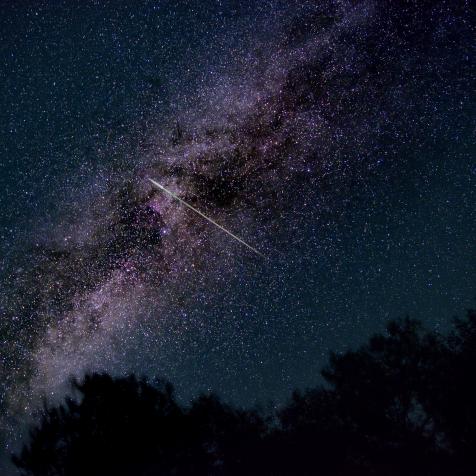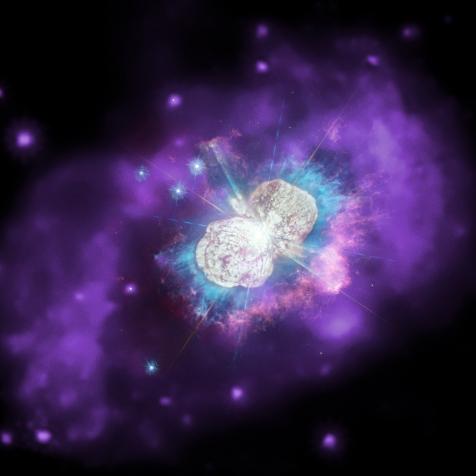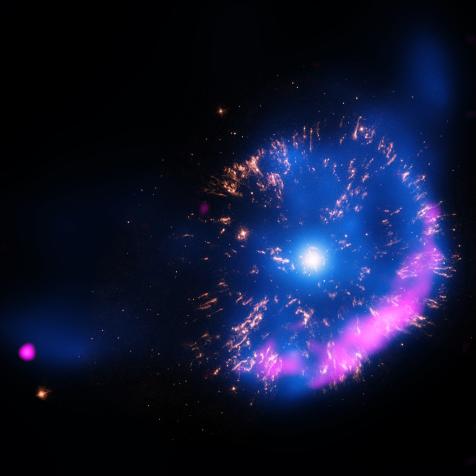
NASA, ESA, and R. Humphreys (University of Minnesota), and J. Olmsted (STScI)
NASA, ESA, and R. Humphreys (University of Minnesota), and J. Olmsted (STScI)
We’re Watching a Giant Star Die Before Our Very Eyes

Sure, the Sun is big. It’s over a hundred times wider than the Earth and weighs over 330,000 times the mass of our planet.
It’s peanuts.
Meet VY Canis Majoris, a hulking, bruising monster of a star. It’s a red giant with a size more readily measured in astronomical units (AU), the distance between the Earth and the Sun. VY Canis is almost 1,500 times wider than the Sun, or around 6 AU. That means if you were to plop this beast in our own solar system it would stretch beyond the orbit of Jupiter.
VY Canis Majoris, sitting almost 5,000 light-years away from us, is also about to die.
The star is in a phase of its life known as a red hypergiant. The normal fusion processes that power a star eventually give out, leading to a tangled mess of hydrogen, helium, and other elements all competing for attention in the core.
This shifting causes the outer layers of a star like VY Canis to expand. This star in particular is only about 20 times more massive than the Sun but is ballooned all out of proportion. Because of this insane expansion, the outermost layers of the star are relatively cooler, turning it red rather than the white/blue hues it had during the bulk of its lifetime.
VY Canis gonna blow any day now. Or not. For a long time, astronomers assumed that giant stars like this would end their lives by going out with a bang: a supernova, one of the most powerful cosmic explosions in the universe. Indeed, a similar star to it, Betelgeuse, is predicted to go supernova within the next million years or so. When it does, it will be so bright that it will be visible during the day and outshine the full Moon.
But when astronomers add up all the supernovae that they see, it’s far short of the number of stars out there that are capable of producing such titanic explosions.
And in VY Canis astronomers might have an answer for that little mystery. You see, VY Canis might be a little too big. Recently a team of astronomers used the ALMA telescope to study giant outflows coming out of the surface of the star. ALMA is a network of radio telescopes sitting in the high Atacama Desert of northern Chile and can collect a truly impressive amount of detail.
Armed with ALMA, the team was able to watch individual bursts of material jet themselves out of the atmosphere of the star. An activity like this might destabilize the entire star, forcing it to either lose too much mass (in which case it can’t go supernova anymore) or collapse directly into a black hole without forming a giant explosion in the meantime.
Somebody get the popcorn because VY Canis Majoris is about to get interesting.
Dive Deeper into the Universe
Journey Through the Cosmos in an All-New Season of How the Universe Works
The new season premieres on Science Channel and streams on discovery+.




















